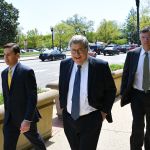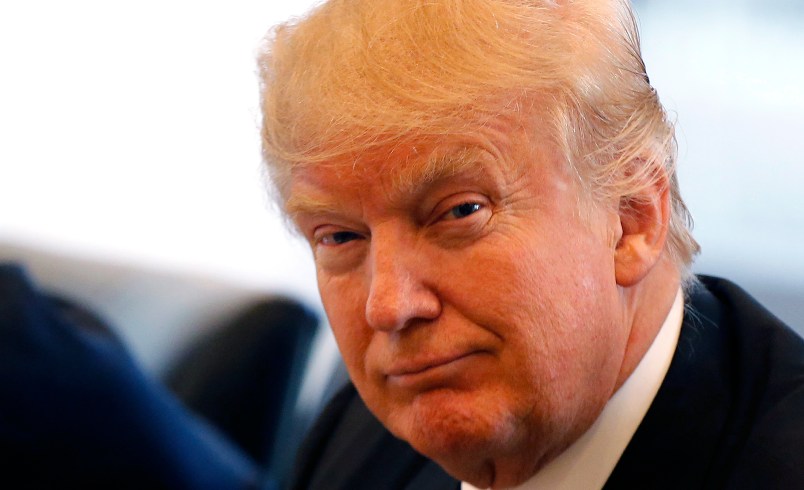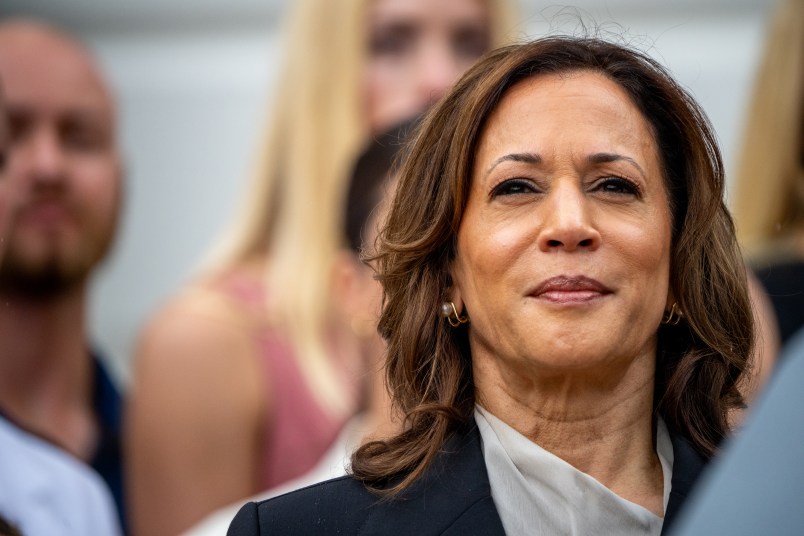There’s a very good story out today from Bloomberg chronicling the flow of money from the former Soviet Union into real estate ventures built by or licensed with the name of Donald Trump. In this case most of what we are talking about is not investment in projects or loans to fund them but the purchase of individual apartments units – though sometimes in bulk – in Trump branded or owned buildings. This is a story we and others have told you. But this new article firms the story up considerably with a new level of detail.
If you think about the luxury apartment business it works something like this. You need to get together a substantial sum of money to fund the construction of your building. Then you sell the individual units which are probably part of a condo or coop. If you’re lucky, you make a tidy profit on the difference between the cost of the building and the proceeds from the sales. (You might also choose to retain ownership of the building and rent the units.) For Trump, in many cases he also has the contract to manage the building indefinitely. For our purposes the key point is that both the investment side of the equation and the purchase of the units are critical parts of the business equation. If you can’t sell the units quickly enough or for enough money, the whole business enterprise can fall apart.
As we’ve discussed before, at some point in the earliest years of the new century Trump properties became a go-to place for people from the former Soviet Union to buy real estate. Some were citizens of those countries, others were American immigrants. We’ve already noted how Trump lawyer Michael Cohen first came to Trump’s attention because he and his extended family from Ukraine was buying up a lot of units in Trump properties in New York and Florida. What this article makes clear is that there were a lot of Michael Cohen type families buying Trump properties in bulk. At least for this part of the tale, Cohen’s is a microcosm of this larger story.
A few nuggets.
“We had big buyers from Russia and Ukraine and Kazakhstan,” says Debra Stotts, a sales agent who filled up the tower. The very top floors went unsold for years, but a third of units sold on floors 76 through 83 by 2004 involved people or limited liability companies connected to Russia and neighboring states, a Bloomberg investigation shows.
Then there’s this …
Sam Kislin, a Ukrainian immigrant, issued mortgages to buyers of multimillion-dollar apartments in World Tower. It’s highly unusual for individuals to issue formal mortgages for U.S. luxury real estate, and the tower loans are the only ones Kislin ever made in New York, public records show.
Almost two decades earlier, Kislin had sold Trump about 200 televisions on credit. “I gave him 30 days, and in exactly 30 days he paid me back,” says Kislin, now 82. “He never gave me any trouble.” He says the televisions were for the Commodore Hotel, which Trump had bought in 1976 with Hyatt Corp.
Later we learn that Kislin opened his electronics store with Tamir Sapir, an immigrant from Georgia who in a matter of years went from hardscrabble cabbie to oil baron and real estate magnate. He later went into business with Trump as, among other deals, a partner on the Trump Soho development project. Later we read this: “Investigated by the FBI in the 1990s for allegations including mob ties and laundering money from Russia, Kislin was never charged, and he maintains his innocence.”
If you read the piece, the anecdotes follow a standard pattern. Fabulously wealthy immigrant or national from the former Soviet Union either sets up shop in a Trump property, purchases one or helps finance one. Eduard Nektalov, a diamond dealer from Uzbekistan, who bought on the 79th floor, is one example. They almost all seem to be under some kind of investigation for money laundering or mob ties. Usually they’re never charged. Sometimes they’re gunned down in mafia assassinations. As Trump himself might say, there’s something going on.
Nektalov was, ironically, shot to death on 6th Avenue, less than a year after his purchase. He was reportedly cooperating with authorities at the time of his death.
There is only so much we can piece together without access to Trump’s internal business records. As I’ve noted before, the great bulk of what we do know about these ventures comes from lawsuits when things went south. (Much of what we know about Trump Soho comes to us that way.) What does seem clear though is that what began as Trump being a go to place for Russian and former Soviet Union money wanting to buy up individual apartment units and luxury homes was shifting in the middle of the last decade to much larger investments to fund the building projects themselves.
Trump Soho is the emblematic example. As we’ve discussed, it’s funded mainly with capital from the former Soviet Union, the origins of which were in some cases hard to figure out even to the people organizing the construction. We also see some of the same people who earlier show up around the unit purchases suddenly reappearing as major investors in the building projects themselves. In the case of Trump Soho, the project was a collaboration of Trump, Felix Sater’s Bayrock and Tamir Sapir.
This is clearly what Donald Trump Jr was referring to in 2008 when he told a real estate conference that “Russians make up a pretty disproportionate cross-section of a lot of our assets. We see a lot of money pouring in from Russia.” The jagged progression of Russian political economy over the last quarter century combined with Trump’s own near-death financial experiences in the 1990s came together to build an enduring partnership by the first years of the 21st century.
Many people look at this arc of growing dependency on money from the former Soviet Union and look for that moment when Trump becomes so dependent on money from Russia that he’s forced to cut a deal with Vladimir Putin; or perhaps his business partners catch him in a compromising situation and then he’s owned by nefarious forces in Russia. I do not rule out the possibility that some less lurid version of one of these scenarios did happen. But what many of us see as the smoke, which must somewhere lead to fire, is actually the story itself. The smoke is the story! Or to put it differently, the deep business ties provide a compelling explanation and I think likely sufficient explanation of Trump’s persistent coziness and affection with top figures in Russia and Russian geopolitical interests.
It’s abundantly clear that from the early aughts through recent years, Trump became highly dependent on money from the former Soviet Union – mainly Russia and Ukraine but also Kazakhstan, Georgia, Uzbekistan and other states. Many of the figures in his orbit were at least in the business of shepherding money out of those countries into New York real estate. In many or most cases the FBI and the DOJ suspected them of money laundering and ties to organized crime.
We tend to think like the people we surround ourselves with. Our priorities and sense of right and wrong and much else are shaped by our own self-interest, how we make our living, how we survive. This isn’t conspiracy, it’s human nature. This is especially so for someone like Donald Trump whose ideas, philosophies, sense of right and wrong, likes and dislikes are so immediately and unreflectively tied to self-interest. Trump’s increasing association with and dependence on this milieu is a strong explanation of his persistent and difficult to explain embrace of Putin, Russia and Russia’s geopolitical interests in Europe. This is what I described in my “innocent explanation” post from earlier this month.
We can also see the impact of the Crimea crisis of 2014 – which is the fulcrum of so much of the Trump/Russia story. If Trump had been getting a substantial amount of his buyers and investors from Russia, the imposition of sanctions in 2014 created a major obstacle to his way of doing business. (The big dip in the global oil market likely had a similar impact.) Remember, what’s bad for Trump is wrong. That’s the rule of thumb. Not just bad for Trump but wrong, stupid, terrible. And it wasn’t just bad for Trump, it was clearly a very bad development for many people in his business orbit. Bad for Trump, Bad! Bad for Trump’s friends, Bad! Bad for Trump’s friends who keep the money flowing, Especially Bad!
I don’t deny that we may eventually find a needle in this haystack. There are parts of the story which remain difficult to piece together based on what I’ve called this “innocent explanation.” There are so many sleazy characters, so many connections to figures in the Russian criminal underworld that I’m sure there are at least a few sub-needles there. But haystack itself is a very, very big story.
[Did you enjoy reading this post? Considering supporting TPM by subscribing to Prime.]








